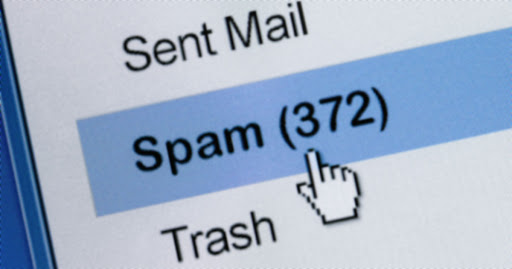Even in the best conditions, correctly conducting email marketing is difficult. However, it is complicated by the plethora of outdated and just incorrect marketing advice accessible. For more tips check with this boston SEO agency which is filled by experts.
Regardless of how far technology develops, an email will remain popular and the use of an email validation tool is vital. Indeed, millennials prefer email to receive company messages (73 percent). Any marketer would be foolish to ignore that figure. However, most marketers make one email marketing mistake: sending emails on specified days of the week. This term varies from business to company, but it is not one that every marketer follows. Through programmatic SEO solutions, your website will continuously get optimized to increase web traffic.
To get you started, we’re debunking 13 email marketing misconceptions (many of which you’ve undoubtedly heard so many times you’d swear they were real) and giving you the resources you need to discover the truth. Let’s dispel some email marketing fallacies!

13 Myths Uncovered About Email Marketing
Emails annoy people.
Your client has agreed to get an email from you indicating they are interested in receiving them. Please send your emails frequently enough so people don’t forget why they were first interested in your company or newsletter.
Cut down on the number of emails you’re sending if you’re seeing an increase in unsubscribes or a decrease in open rates from your clients. However, it is unlikely that the sheer volume of emails is to blame. Emails should be sent at least once a month at the very least. You can improve your inbox workflow and monitor email interaction.
Email marketing is dead.
Many believe that email marketing is no longer the most significant way to connect with clients, but that’s just a misconception. Why? Because this channel has become increasingly competitive over the years. Just as you design your web pages to build your brand, Email marketing is very helpful in building your brand identity and will help strengthen your other strategies like your social media campaigns. It’s no secret that every retailer is using mailers to target their customers to the fullest. If you want your subscribers to pay attention to your emails, you need to send them something fresh and unique. The average attention span is just 8 seconds, which makes capturing interest a challenge. As mentioned in this article on OriginOutisde.com about content marketing, successful strategies require immediate, engaging, and value-driven content to cut through the overwhelming deluge of daily media.
Do not only consider conversion when writing emails; think about how to grab the reader’s attention. It’s impossible to make sales if you can’t get people’s attention in the first place.
Email marketing automation is expensive and time-consuming.
Email isn’t going anywhere. Although social media marketing is on the increase, email is still used by many businesses. Email marketing is still one of the most cost-effective and non-intrusive ways to keep in touch with your clients.
According to statistics, email marketing isn’t dead.
Around the world, we send more than 102.6 trillion emails a year. More money is predicted to be transferred by 2022, with a total of 126.7 trillion expected to be delivered. Subscribers to email lists receive an average of 13 promotional emails per day. Some of us might check emails up to 20 times a day. The proliferation of smartphones and tablets has made it easier than ever to check email.
Emails aren’t going away, and neither is email marketing. For every dollar you spend on email marketing, your return on investment is $44. More significantly, emails are only delivered to persons who have agreed to receive them. You can also verify emails with Truelist to ensure your campaigns reach the right audience and maintain high deliverability rates.
Additionally, you may segment your audience based on their online behavior, location, age, and other criteria using economic and effective alternatives to Mailchimp. Targeted email marketing resources send emails that are eagerly awaited. Using good content to advertise your product is a win-win situation for you and your audience!
Unsubscribes are bad news.
It’s time to stop getting enraged when you see a high unsubscribe rate after sending an email campaign.
It’s a gift when someone unsubscribes from your email list because it tells you they’re no longer in your target audience. As a result, you won’t have to pay for subscribers that dilute your open and click rates and who will never convert to customers. Yay!
You’re doing good if your unsubscribe rate is less than 1%. Adding new subscribers faster is essential if you want to keep your list growing. Your emails could end up in the spam folder or the trash if someone filters them out of the recipient’s email account. Even if your recipient never opens one of your emails, your email service provider (ESP) will continue to bill you for their service.
Subject lines should be short.
Subject lines are a hot topic when it comes to email marketing. “So, what’s the greatest subject line?” is one of the most often requested questions I get during my workshops. As a rule of thumb, the more concise the subject line is, the better.
MailChimp, an email service provider that sends more than a billion emails daily, says there is no correlation between the length of a subject line and the open rate of most emails. Most email clients truncate long subject lines. Thus, shorter ones are preferred by subscribers who get your emails on mobile devices. Consumers increasingly use mobile devices, and you should expect at least half of your customers to do so.
Do you make your viewers FEEL anything when they read your work? “Is my topic line too long?” is preferable. Can you surprise, fascinate, or tease the reader with your subject line? If you can elicit an emotional response from your readers, they are more likely to open your email. Any three words or less is an excellent summation. People are more likely to read your message if it has more than 15 words.
Message match is not essential for email post-click landing pages.
Message matches may make or break PPC advertising. Marketers often overlook the importance of message matches in Google Ads and email message matches.
When presenting your offer, ensure the email contains a direct link to the email post-click landing page. Make sure that the message you send and the message the recipients receive are a match for your email marketing resources recipients to benefit from your offer.
There’s one perfect day to send emails.
Let’s say you think that Tuesdays are a good day for sending emails. One thing is for sure, Tuesdays are made for tacos. Definitely, but when it comes to email, the truth is there’s no universal perfect day to send emails. And if there were, we’d all have jumped on board and flooded the inbox on this one day.
Traction is industry and audience-specific. So, if you’re in retail, you might find weekends are best. Or, if you’re a restaurant, Wednesdays might be the winner as people prep for the weekend. Test your sends and track open email rates to learn when your customers prefer to hear from you, and then lock it in!
Templates are Better
Templates are everywhere. Their use can be a faster method to get things done. Many prefer them instead of getting design services. But are they better in all aspects? Not usually. Why? Most marketers believe that using templates that have already been tried and tested is a beautiful method to increase their response rates. So what they do is duplicate effective templates for cold emails. However, they seem to forget that everyone else is also using them. There is no point in utilizing a template if everyone in your field already uses the same one. There is no danger in using a template that has already been effective, but you should modify it at least a little bit.
Adding Videos Can Boost Engagement
There has been a lot of discussion regarding the benefits of including videos in your email communications. An actual video file, on the other hand, can make an email less likely to be sent if it is included.
An email’s delivery capacity can be harmed by including significant assets like video. Ensure your emails are clean and professional-looking because they must be delivered following content and legality. By clicking the image, the user will be taken to another page where they can watch the video in its entirety. This approach is spot-on and will significantly increase the effectiveness of your video email marketing efforts.
This is an excellent method for promoting your content. With a clickable link right on their screens, it’s straightforward! The email’s deliverability is unaffected by viewers’ actions.
Need help with your web project? Make the call. 857.400.8959
4 p.m. is the best time to send emails
Your firm may benefit greatly if you send promotional emails at 4 p.m. In contrast, your educational emails may have difficulty getting opened if you send them at that time. As a result, testing your send times is critical. Experimenting with your send times can help your firm achieve the best engagement rates and receive the most value from your various email campaigns, such as for promotions, lead nurturing, and customer retention. Your testing should begin at 4 p.m., the time the industry advises.
FSeewhether, you can regularly obtain higher engagement rates. For an email campaign, A better send time may be found if you experiment with different times and see what works best for you. Make sure to keep in mind the day of the week you plan to test your send times.

Emails with the word “free” get marked as spam.
This email marketing best practice is long gone, yet it was once prevalent. In the past, you had to be careful about the terms you used, such as in subject lines, because they may send your emails to the spam folder. Even though consumers check their spam folders, it doesn’t lead to the highest levels of interaction.
The following are a few instances of words that would be flagged as spam:
- Gratis
- Economical
- Buy
- Discount
- Earn
- The cheapest
In contrast, spam filters have improved since dial-up Internet, becoming more intelligent and capable of distinguishing between spam and promotional emails. This email marketing hoax persists, sadly. Emails that refer to themselves as “Free” If you’re still holding on to this email marketing fallacy, it’s time to let it go.
To describe your email, you can use these terms (if they’re accurate). Incorporate a limited-time offer, such as free shipping, into your subject line. Email filters will recognize your offer as non-spam if it includes the word “free,” which explains the offer.
Millennials don’t subscribe to marketing emails.
According to a study by Adobe, millennials are the most likely demographic to check their email regularly. There are many ways to establish customer relationships through email marketing, but if you’re not targeting millennials, you may miss out on the opportunity.
The key to email marketing success with millennials is to prioritize quality over quantity. Email is the preferred method of communication for millennials, but if a company sends out too many emails, this demographic may become disinterested. An email A/B test will show you whether or not this is an effective strategy for your marketing. As a result of testing, you can learn what type of emails your millennial audience likes the most.
A spam email is just a poorly designed email.
What comes to mind when someone says “spam email”? The image that comes to mind is one of a sloppy text message from the 1990s.
The truth is more complicated. There may be emails flagged as spam due to a lack of visual appeal, but it’s not the main reason. A HubSpot email deliverability consultant adds, “Some people assume spam is badly structured rubbish mail, but spam is any unwelcome bulk marketing email,” he says.
Not because this email isn’t beautiful, but because you never signed up to get it in the first place, which is why it’s likely to be labeled as spam. To put it another way, “If I didn’t sign up for those emails from T.J. Maxx, for example, it’s spam.”
No doubt, even websites are designed to be visually appealing and functional, and so should your emails too. But don’t be blinded by just the aesthetics. Double-check that every subscriber has opted in to receive your messages when putting together an email list. If it’s not, it’s likely to be flagged as spam.

Conclusion
We’ve covered a lot of ground here. But don’t believe everything you read on the Internet, not even what I say! Someone else’s success may not be your success, and something that worked in the past may not work now.
So the only way to find out what works best for your audience is to test everything and see what works right away. What works for one person may not work for another.
Author Bio:

Miguel Davao is a graduate of literature and linguistics and has been writing content for about 5 years now. He particularly writes content on eCommerce, design, photo-editing tools, and content writing tips
Currently, he works as a full-time writer at Removal.AI – a fast-growing start-up that offers image processing and AI background remover, web and app development, and marketing automation.
Miguel Davao, Removal.AI
Like this blog post?
Are you interested in maximizing your online growth? We can help with Web Strategy, Web Design & Development, SEO, and content writing. Talk to Us! Call: (857)400-8959

We hope that you enjoy our content. If you decide to make a purchase after clicking on one of our affiliate links, we’ll earn a small commission at no extra cost to you. Thanks for reading! View our Affiliate Disclosure

